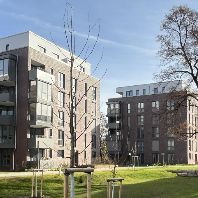German cities dominate the investment prospects for Europe’s commercial real estate sector as investors continue to favor safe haven locations according to Emerging Trends in Real Estate® Europe 2013, a real estate forecast published jointly by the Urban Land Institute (ULI) and PricewaterhouseCoopers (PwC). The ranking of 27 cities across Europe, based on respondents’ expectations for market performance in 2013, sees Munich top the league table followed closely by Berlin in second place and Hamburg in fifth position, with investors taking comfort from each of the cities’ strong local micro-economic climate and resilient property market conditions.
London, which is seen by many as Europe’s ultimate safe haven market, is the largest riser in this year’s report taking third position. Investors continue to be attracted by the size and liquidity of its real estate market, the stability of sterling as a currency and its ability to stand alone from the rest of the UK and Europe’s economic issues.
Overall, the highest ranked cities are the larger Western European centers with international appeal and better economic prospects. In contrast, the worst performing cities were those in countries at the heart of the Eurozone crisis or struggling to cope with the consequences of the 2008 financial meltdown such as Athens, Lisbon, Dublin, Madrid and Barcelona.
Respondents to this year’s survey were the most optimistic about the future of their own businesses since 2008. This is indicative of a wider trend, which sees a movement away from investment strategies centered on whole countries, cities or industry sectors and towards a focus on specific individual assets and opportunities.
“Almost five years since the start of the financial crisis, real estate investors remain cautious about capital deployment and the availability of debt” comments Joe Montgomery, chief executive of ULI Europe. “As a result investors are focusing on the harder to find opportunities in blue-chip cities such as Munich, Berlin, London and Paris, rather than turning to secondary locations in search of higher returns.”
Simon Hardwick, real estate partner at PwC Legal, said: “Our report shows that real estate investors are approaching opportunities with a new mindset, conscious that the environment in which they are operating is ‘the new normal’ and is set to stay the same for some time yet. Investors face ongoing challenges but are cautiously optimistic about their prospects for the first time in many years.”
Top Investment Markets for 2013
The top five European real estate investment markets in 2013 are predicted to be:
1. Munich -The city’s strong and liquid market is appealing to investors looking for dependable locations that can withstand economic turbulence. Munich has a mixture of global and mid-sized business occupiers and has expanding biotechnology, environmental sciences and media industries. The city’s prospects are underpinned by its demographics, with its population set to rise by 112,000 by 2025 and its existing inhabitants having a purchasing power unrivaled elsewhere in Germany. Low vacancy rates and constrained supply mean that investors are confident of rental growth in 2013, while a rapid increase in tourist numbers, especially from BRIC countries, provides a positive outlook for Munich’s retail market.
2. Berlin – Dubbed by many as Europe’s “Silicon Allee”, the city has a growing reputation as a technology hub with over 15,000 tech companies generating turnover of €19 billion per year. The influx of skilled technology workers has had a boost on the city’s residential market where the inner-city luxury apartment market is growing, especially in districts such as Mitte which has seen significant rental increases. Berlin’s reputation as a cultural center ensures it receives high visitor numbers benefiting both the apartment and hotel sectors.
3. London – The UK capital is one of the biggest risers in the 2013 survey, driven by its status as one of the world’s ultimate safe havens. The city is perceived as sitting apart from the problems in the wider UK and European economies and the size, strength and liquidity of its real estate market are attractive to many investors. There is some speculation that the recovery of values is complete but many see micro-market opportunities especially in the residential sector where super-prime homes in the very best postcodes and the under-explored private rented sector are favored. The City and Canary Wharf office markets are still attracting trophy hunters but the development of new offices for financial services businesses is out of favor as the sector sheds jobs. Opportunities exist to develop space for the city’s growing technology and creative industries.
4. Istanbul – While the other cities in the top five appeal to investors because of their inherent safety, Istanbul remains the most popular location for future development opportunity. The city’s exciting real estate potential is driven by economic growth which rivals China and demographics where the average age in Turkey is only 29. Recent changes have eased restrictions on foreign ownership of Turkish real estate, as the government seeks to attract international capital and transform Istanbul into a regional financial center. It is estimated by Turkey’s Association of Real Estate Investment Companies that these changes will boost investment in real estate by $5 billion a year (approx. €3.7 billion).
5. Hamburg – Investor interest in Germany’s second largest city is driven by its safe-haven status. Hamburg benefits from a diverse mix of global occupiers and domestic small and medium sized businesses, with media remaining the city’s largest employment sector and the port acting as a crucial trade hub for goods from the Far East. Investors are favoring offices, where prime yields of 4.75% are their lowest since 2002, as they are willing to pay the high price for the stability the market offers. However, with constrained office supply, appealing assets are becoming increasingly hard to source and some investors are switching to the city’s industrial sector.
Source: ULI















